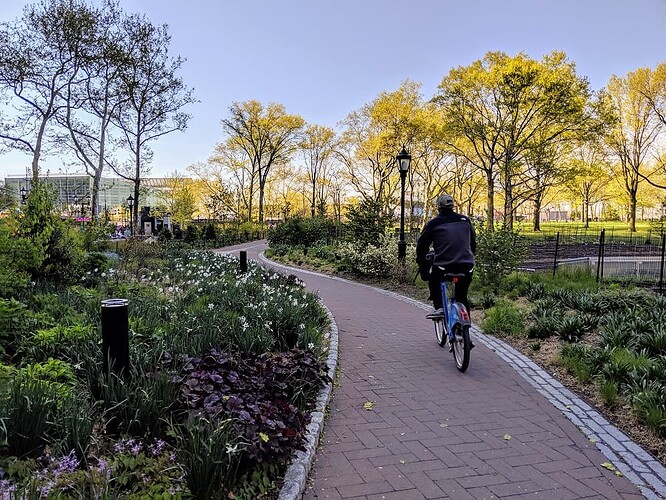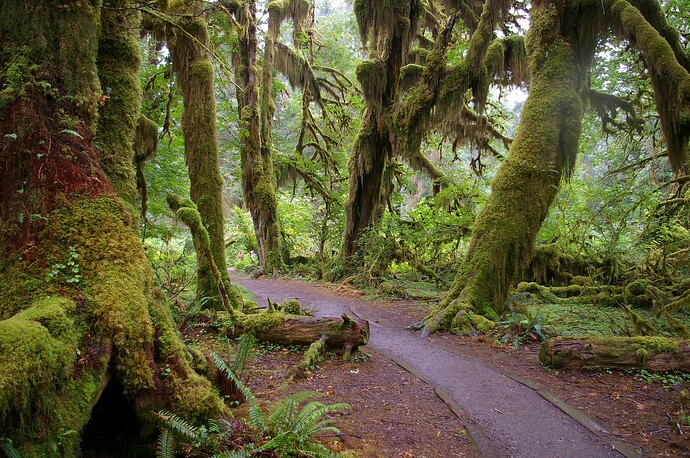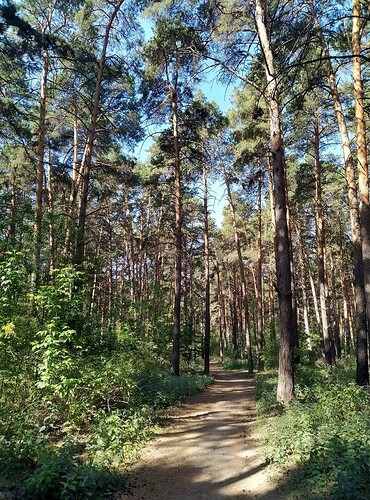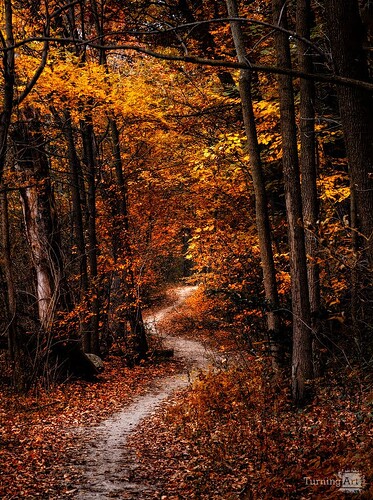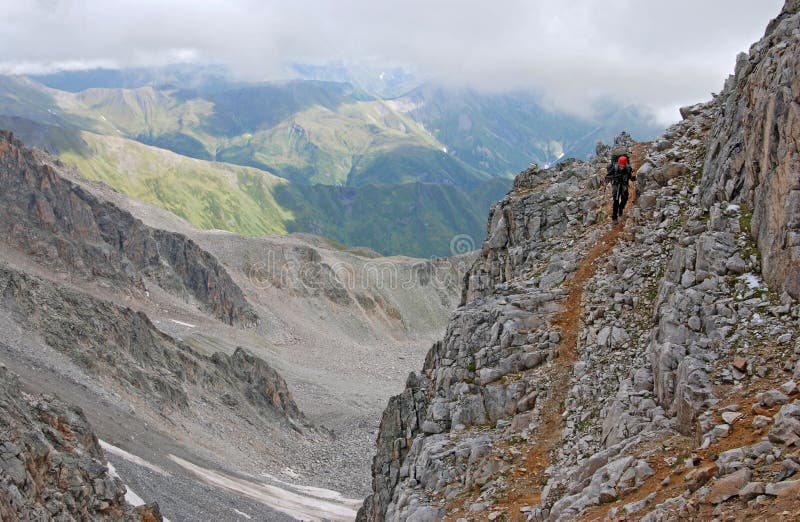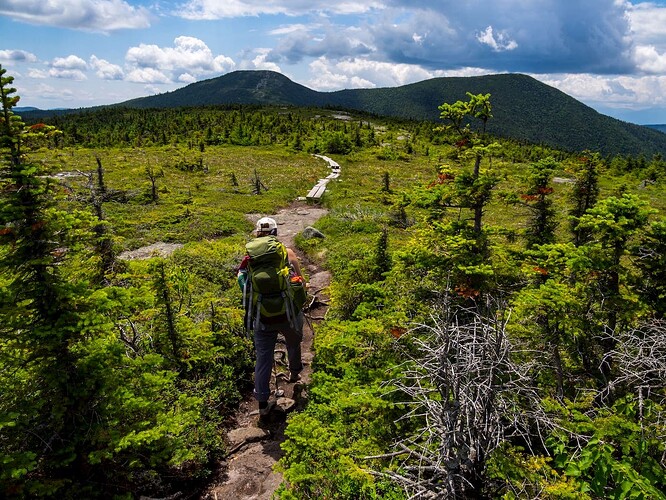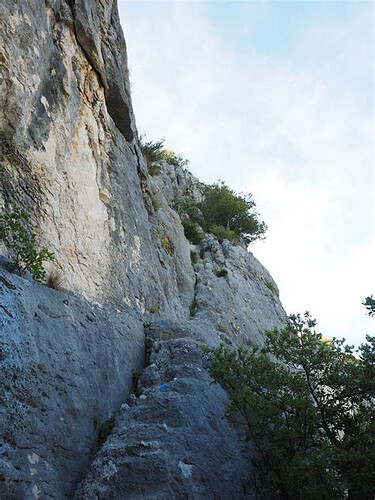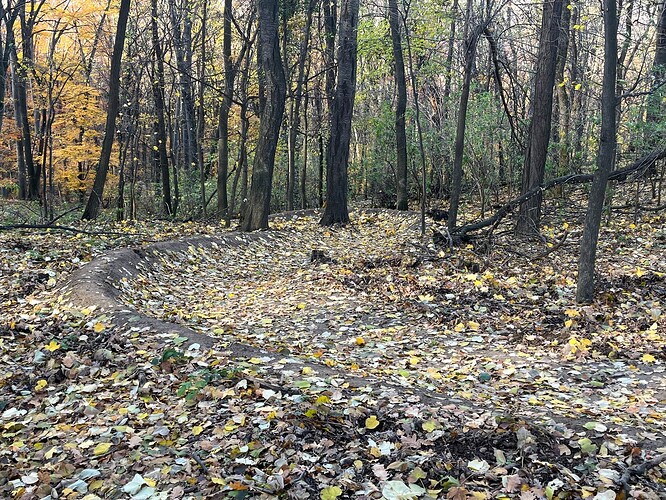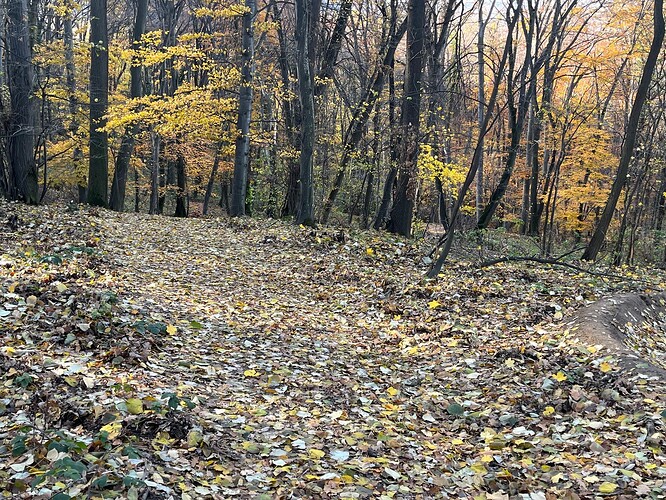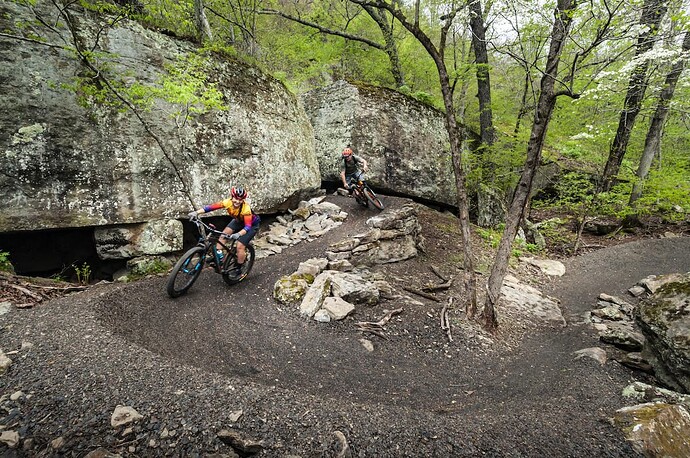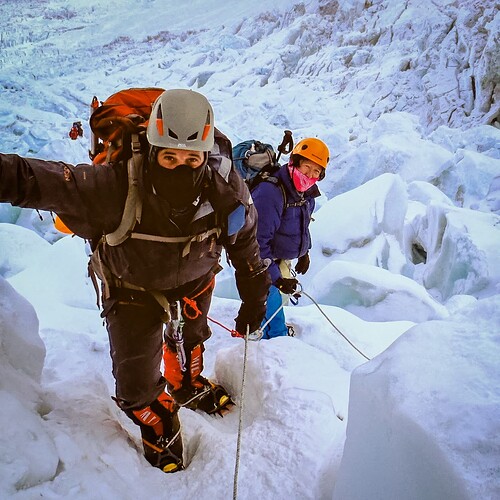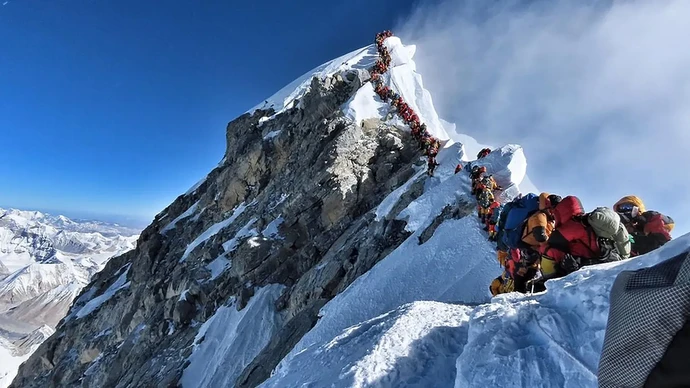This is a work-in-progress for the proposal on the sub-division of highway=path.
Discussions are continuing in this thread, mainly.
The base is Pathway=* for ways not used by or intended for cars, which contains most of the narrative with the history and explanation. This is expanded with types found in the legend at Alpinist routes marked as footpaths - #117 by Hungerburg.
(TBD used bellow means “to be determined” after discussion.)
Naming
As it seems that there is not much support for the path sub-types to be included in the highway=* tag and thus effectively deprecating highway=path straight away, a new tag would be used for subdivision. TBD: This would be path=* or pathway=*. Over time, this could turn into the primary tag by dropping highway=pathfrom ways withpath=*`.
The main distinction between highway=* and path=* is that cars can use highways but not paths. Secondary distinctinos is that virtually all highways above track are built. On the other hand, paths are usually not built/contructed. There are exceptions to this: there are built paths in urban areas (for example ways shared by bikes and pedestrians in parks or alongside roads) or in highly managed rural or natural areas (in national parks or non-car links connecting urban areas. Unbuilt paths follow the terrain, were created by people repeatadly treading the same trajectory and may contain “interventions” like ladders and steps.
Question of requirements
TBD: It is not clear whether the proposal would state that a pathway/path subtag is required for highway=path (similar like subtag is required for tourism=information).
Values
The values would be:
- “Karrenweg” Working name. TBD: some name suggestions:
track, single-track, multi_use, motorcyclefootway, all_but_cars, two_wheels, carless, cartwheel, multi-use single track:
- Suitable for wheeled traffic but either narrower than a
highway=track. TBD: It may additionally include paths where cars are legally banned but would otherwise fit.
- Paths where motorcycles and (road) bicycles can be used with ease, both legally and practically, but also carts, carriages, wheelbarrows, quads, horses etc.
- Exceptions to legal access can be marked with for example
motorcycle=no.
- Should not overlap with
shared_use, highway=cycleway, mtb_single_track.
- TBD: Conceivably could be broken alongside the built/unbuilt distinction (then the main difference would be whether they are well-usable during rain), but probably not needed.
- German name for this is “karrenweg”
trail (also suggested: path)
- Not generally practically suitable for vehicle traffic but suitable for pedestrians.
- Legal access undetermined. Both trails where technically anything is legally permitted and trails that are allowed only for pedestrians are admissible. This would make explicit that unconstructed
highway=footway should be tagged as trail.
- These are mostly unbuilt. Built ones fall under highway=footway. Some lightweight maintanance like pruning vegetation and preventing erosion is fine.
- TBD: Can be divided into two subsets:
easy_trail, wide_trail This is easy, allows for safe passing of people (even if they have to leave the trail itself).difficult_trail, narrow_trail Appropriate for only one person at a time. Too narrow for two persons to pass each other comfortably and safely. More demanding than easy_trail.
traces Path that is barely discernible on the ground. Only trace(s) or markers visible.trackless (?), pathless, off-trail, cross_country,terrain: Path not visible on the ground but terrain suitable (at least) for pedestrian traffic
All of the above are encouraged but not required to have sac_scale (and possibly horse_scale and mtb_scale) specified. Also trail_visibility is recommended, though for difficult_trail and up, at least trail_visibility=good is the norm (which can have exceptions). traces ranges between intermediate to horrible. pathless is bad and below.
Specialized:
mtb_single_track, downhill_trail. For MTB (downhill).
- This is for ways specifically designed and meant for people on mountain bikes. That means they are usually modified to make the ride more pleasurable.
- Legally they do not need to be exclusive to bikes, but in practice, either by social norm, their position in the path network, signage, or their unsuitability (or even danger stemming from dense downhill trafific) for pedestrians means overwhelmingly people on mountain bikes use them.
- They need not be enclosed in some compound and they can be either for free or paid.
- They are usually managed, either formally or very informally (i.e. somebody built a MTB-specific trail guerrilla-style).
mtb_scale is highly recommended.
shared_use
- Ways that are legally meant to be shared by cyclicsts and pedestrians (byt not motorcycles and other vehicles).
- Currently mapped as
highway=path;bicycle=desiganted;foot=designated (TBD: this tagging should probably over time be deprecated in favour of this tag.).
- Described here: Shared-use path - Wikipedia
snowmobile
- Either only existing in winter (when they then should be somewhat observable by snowmobile traces) or signed all-year-round but impractical in summer.
mountaneering (in search of possbily better name)
- Outside of current scope of
highway=path, meaning they are harder than sac_scale=diffficult_alpine_hiking.
- Estabilished routes, for example to Mt. Everest, Manaslu (but this is not specific to Himalayas), or Matterhorn.
- Only routes where one would be likely to meet people when the season and weather is good should be included, by far not all mountaneering routes ever undertaken should be put in.
- Typically need mountaneering equipment like crampons, ropes etc.
- Should never be combined with
highway=path.
- Typically leads to a major summit. Sport_climbing routes that people climb mainly for the joy of overcoming difficulties (in climbing shoes, strictly on rope, usually without crampons) are covered by Climbing - OpenStreetMap Wiki
TBD: Ways conceptually today under highway= or other keys that can either stay there or migrate to path/pathway (ideally, they have no overlap with the new tags):
via_ferrataladderstepsfootwaycyclewaybridlewaygolf=golf_cart
The last one:
unknown or yes Ways under path but whose detailed classification is unknown.
- Especially if the requirement for adding secondary tag to
highway=path is adopted, this would indicate a new path whose further classification is unknown for some reason.
- Would basically be a specific
fixme.
- Akin to existing
highway=road.
- Would facilitate moving over from
highway=path as it would help to distinguish newly added unknown paths from older not-yet-retagged highway=paths.
Examples
karrenweg (single_track, multi_use, carless, etc.)
Trail, easy_trail, wide_trail
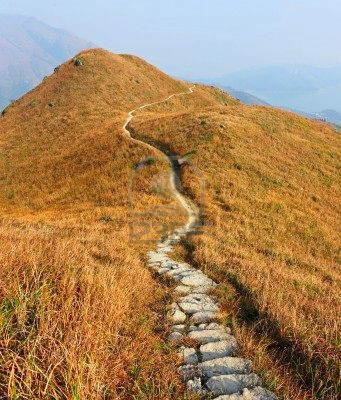
Trail, difficult_trail, narrow_trail
Presence of obstacles on the side makes this one a narrow path:
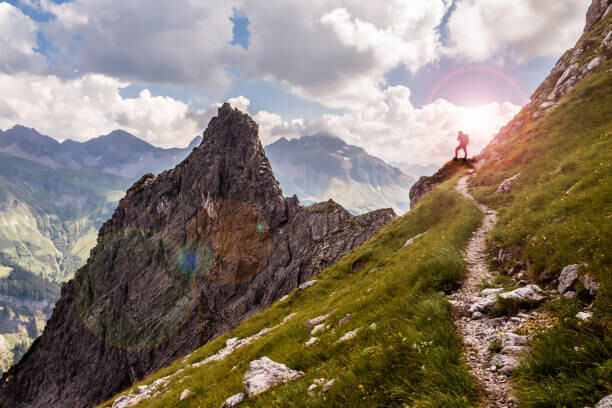
Trail, disputed whether easy_trail or difficult_trail
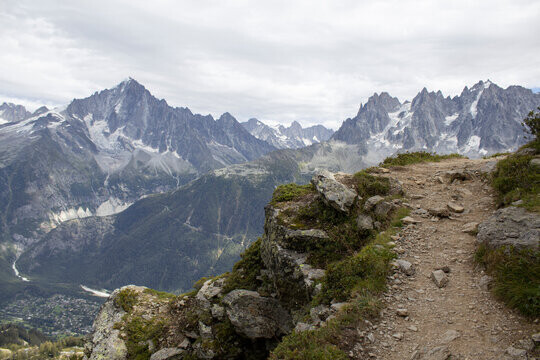
Trace
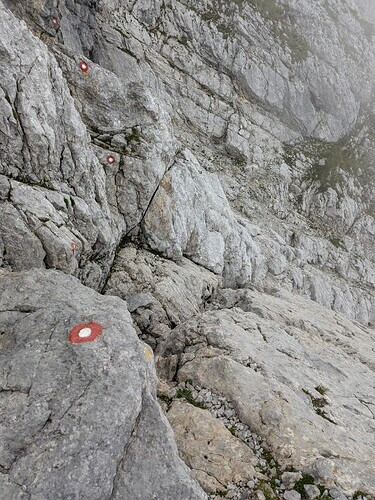
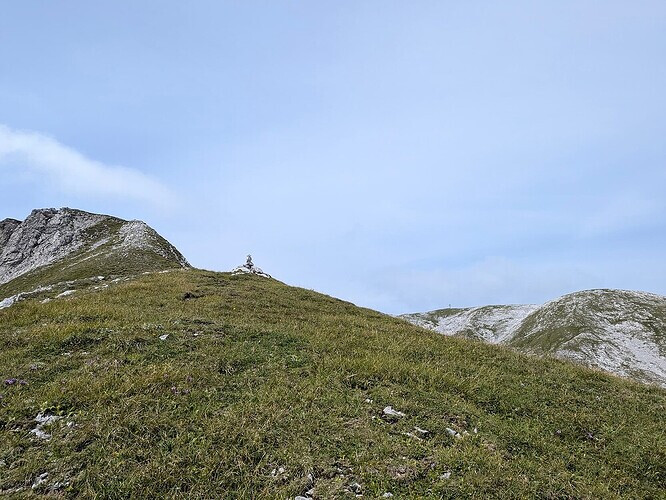
(the rock stairs are the trace:)
Pathless, no visible traces or markers on a way but terrain suitable for crossing on foot
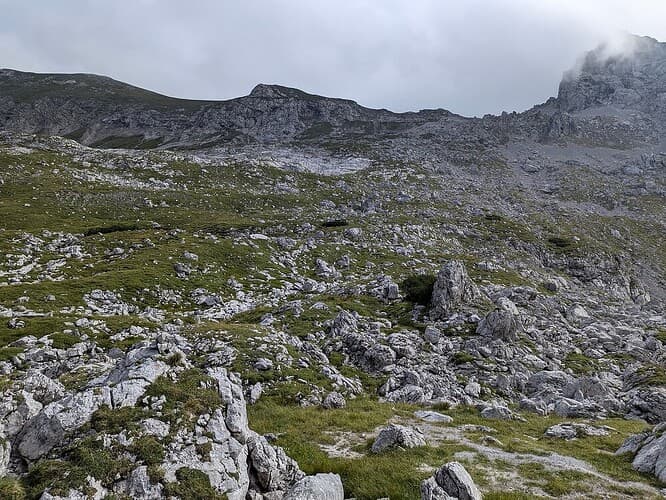
MTB trail (mtb_single_track), notice the constructed curved wall made specifically to easy going through the curve at speed on a mountain bike
A trail (easy_trail) next a MTB trail pictured above (on the right you can see the constructed bum described above`)
Other examples of mtb_single_track
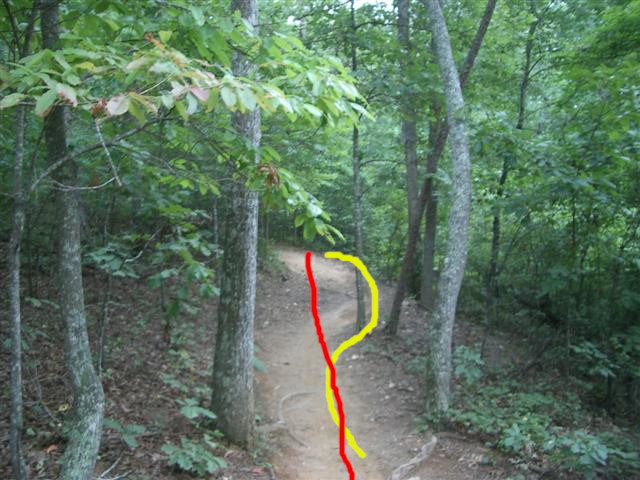
A pedestrian would most comfortably walk along the red line. For a biker going downill, momentum makes the yellow line more logical and enjoyable (the difference is faint but discernible here).
mountaineering (only the first photo one has a license that makes it ok for the wiki)
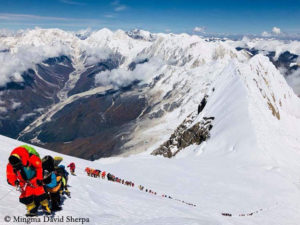
Existing OSM ways that would be tagged with mountaneering
 implemented
implemented